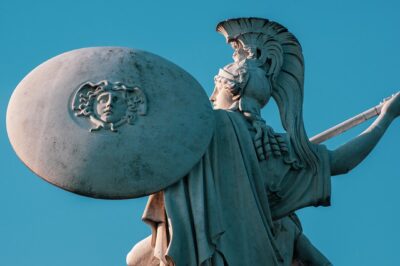The hero’s journey is a classic narrative arc that has been used in stories for centuries. In any thriller novel, the hero’s journey is exciting and suspenseful. It follows the archetypal story of a character who goes on a quest, faces challenges, and ultimately returns home changed.
The hero’s conscience is always a critical factor in this story. They must face their fears and overcome obstacles to achieve their goals. Some of the most famous examples of works that follow the hero’s journey include The Odyssey, Star Wars, and The Lord of the Rings.
This blog post will discuss the hero’s journey and explore what makes it so captivating for readers.
The hero’s journey and its three main stages
The hero’s journey is an ancient story archetype that has been used in many different cultures. It typically consists of three main stages: separation, initiation, and return.
1. In the separation stage, the hero leaves their ordinary world behind and embarks on a dangerous quest, which is usually where the story’s conflict begins.
2. In the initiation stage, the hero faces their fears and overcomes obstacles. This is usually the most challenging part of the journey, but it is also where the hero grows and learns more about themselves.
3. Finally, in the return stage, the hero returns to their ordinary world, changed by the experiences of their hero encounters. They may have new knowledge or abilities that they can use to make their world a better place.
The hero’s journey is a common theme in many stories, especially thrillers. This is because the journey itself is full of suspense and excitement. It is also a great way to develop the character of the hero. The journey can help the hero grow and change and show the reader what the hero is truly capable of.
The first stage, The Ordinary World, in relation to thrillers

In thrillers, the hero’s journey often begins with what is known as the “Ordinary World.” This is the hero’s everyday life before they are thrust into adventure, and it contrasts the hero’s ordinary life with the extraordinary events that are about to unfold.
In many thrillers, a hero is a normal person who suddenly finds themselves in a dangerous situation. The Ordinary World stage of the hero’s journey helps to set up this contrast and creates a sense of suspense for the reader.
It also helps to establish the hero’s character and gives the reader a glimpse into their life before they are plunged into danger. This stage of the hero’s journey is essential for setting up the rest of the story and creating a compelling protagonist for the reader to root for.
This event is often a crime or some other type of danger in a thriller. The hero must then choose to stay in their comfort zone or venture out into the unknown to try and stop this event from happening. This is often a difficult decision for the hero, as they risk their own safety for the greater good.
How the second stage, The Call to Adventure, manifests in thrillers
The Call to Adventure is the second stage in a hero’s journey, and it typically manifests as an event that disrupts the hero’s ordinary life and forces them to embark on a quest. In thrillers, this event is often a crime or other act of violence that sets the story in motion.
The hero is usually thrust into the situation unwillingly, and they must overcome their fears to save themselves or others. This can be a physical challenge, such as escaping from a burning building, or a mental challenge, such as outsmarting a kidnapper. Either way, the Call to Adventure is a pivotal moment in any thriller, and it is what sets the hero on their journey.
What motivates the protagonist to make this choice?
The call to adventure is a powerful force that inspires even the most reluctant heroes. But what is it that drives someone to answer the call?
In many cases, it is their conscience that drives them. The hero knows that others will suffer if they do not take action. They may not be able to live with themselves if they do not try to stop the event from happening. It may be a desire to prove themselves, overcome their fears, or find a sense of purpose for themself.
Others may be driven by revenge or a need to right a wrong. Whatever the motivation, it is clear that the call to adventure is not easy to ignore. Those who answer it are often changed forever, embarking on a journey to test their limits and push them to become the best version of themselves.
In many ways, the call to adventure is a call to greatness. It is an opportunity to test oneself, discover hidden strengths, and make a difference.
The third stage, The Transformation, and how it applies to thriller protagonists

The third stage of a hero’s journey is the most difficult in many ways. However, this stage is also when the protagonist undergoes their most significant transformation. They are forced to confront their fears and learn to become a new person. As a result, they emerge from this stage as a stronger, more confident individual.
This transformation is essential for thrillers, as it helps to create an emotional connection between the protagonist and the reader. Without it, the protagonist would be just another character in a book or movie. However, with it, the protagonist becomes someone readers can root for and empathize with.
This journey can be difficult for the hero, as they often go against seemingly insurmountable odds. The hero must be willing to sacrifice everything to save the day, including their own life.
The ultimate boon in the hero’s journey in attaining inner wisdom and self-knowledge allows the hero to emerge from their ordeal stronger, wiser, and ready to return to the transformed world.
The transformation can be physical, mental, or emotional
1. Physical transformations are often seen in stories where the hero gains superpowers or becomes different.
2. Mental transformations involve the hero gaining knowledge or understanding that they did not have before.
3. Emotional transformations are when the hero learns to control their emotions entirely or let go of them.
How all three stages work together to create a thrilling story

In any great story, the plot moves through three distinct stages:
Setup
In the Setup stage, the story’s protagonist is introduced, along with the challenges and obstacles they will face. In many cases, the setup stage introduces some main characters who will help or hinder the hero’s progress.
Here, we also discover what’s at stake for the protagonist if they refuse to take the challenge. In other words, what will happen if they don’t leave their ordinary world behind and venture out into the unknown? Depending on the story, this can be anything from personal tragedy to global disaster.
This part of the story establishes the stakes for the journey and sets up the conflict that will drive the plot.
Confrontation
The confrontation stage is where the protagonist faces off against the main antagonist. This can be a physical battle, often coming to a head in a climactic battle, or a mental battle where the protagonist must overcome fear or insecurity.
The protagonist must triumph over the antagonist and achieve their goal to complete the journey. This victory allows them to return home after their hero ventures, changed, and with new knowledge they can share with others.
Resolution

In the resolution stage of the Hero’s Journey, the hero returns home and uses what they’ve learned on their adventure to help those around them.
For example, if the hero is a firefighter, they might use the skills they learned to put out a fire and save someone’s life. Or, if the hero is a doctor, they might use their knowledge to cure a disease.
The resolution stage is often seen as a time of growth and change for the hero, who learns more about themselves and becomes more vital due to their journey.
These three stages work together to create a thrilling story that keeps readers engaged from beginning to end. By carefully planning each plot stage, writers can ensure that their stories are engaging and exciting for readers.
This extra bit of news might be interesting: Joseph Campbell, the father of the hero’s journey, was an American scholar who worked in comparative mythology and wrote several books, including The Hero with a Thousand Faces. He is probably most well-known for his work on the monomyth, or “the hero’s journey.” Campbell’s theories have been hugely influential on modern storytelling and cinema.
The Harry Potter series follows the classic hero’s journey arc, as described by Joseph Campbell. Harry goes through several challenges and ordeals in the story as he quests for knowledge and power, eventually winning over the evil forces that threaten his world.
Examples of well-known thriller novels that follow the hero’s journey
– One example of a well-known thriller that follows the hero’s journey is The Bourne Identity by Robert Ludlum.
In this novel, the protagonist, Jason Bourne, discovers he has amnesia and must figure out who he is and why people are after him. He goes on a journey to find his identity and saves the world from a terrorist plot.
– Another example of a well-known thriller novel that follows the hero’s journey is The Da Vinci Code by Dan Brown.
In this novel, the main character, Robert Langdon, is thrust into a world of mystery and intrigue when tasked with solving a murder. Langdon must use his knowledge and skills to navigate dangerous situations and solve the mystery. In the end, he triumphs over evil and emerges as a hero.
– Other examples of thriller novels that follow the hero’s journey include The Girl with the Dragon Tattoo and The Hunger Games. In each of these novels, the protagonists are thrust into dangerous situations and must fight for their lives. They eventually triumph over evil and emerge as heroes.
Conclusion
The hero’s journey is powerful for creating suspense, excitement, and character development. By understanding the three main stages and how they manifest in thrillers, you can use this knowledge to create an exciting story of your own.
Whether writing a novel or simply looking to add more excitement to your life, understanding the hero’s journey is a great place to start.
If you’re working on your first novel and are looking for more help with your writing, please check out our other articles at https://ullahakanson.com/blogs/
Thanks for reading, and best of luck with your writing!
Ulla

